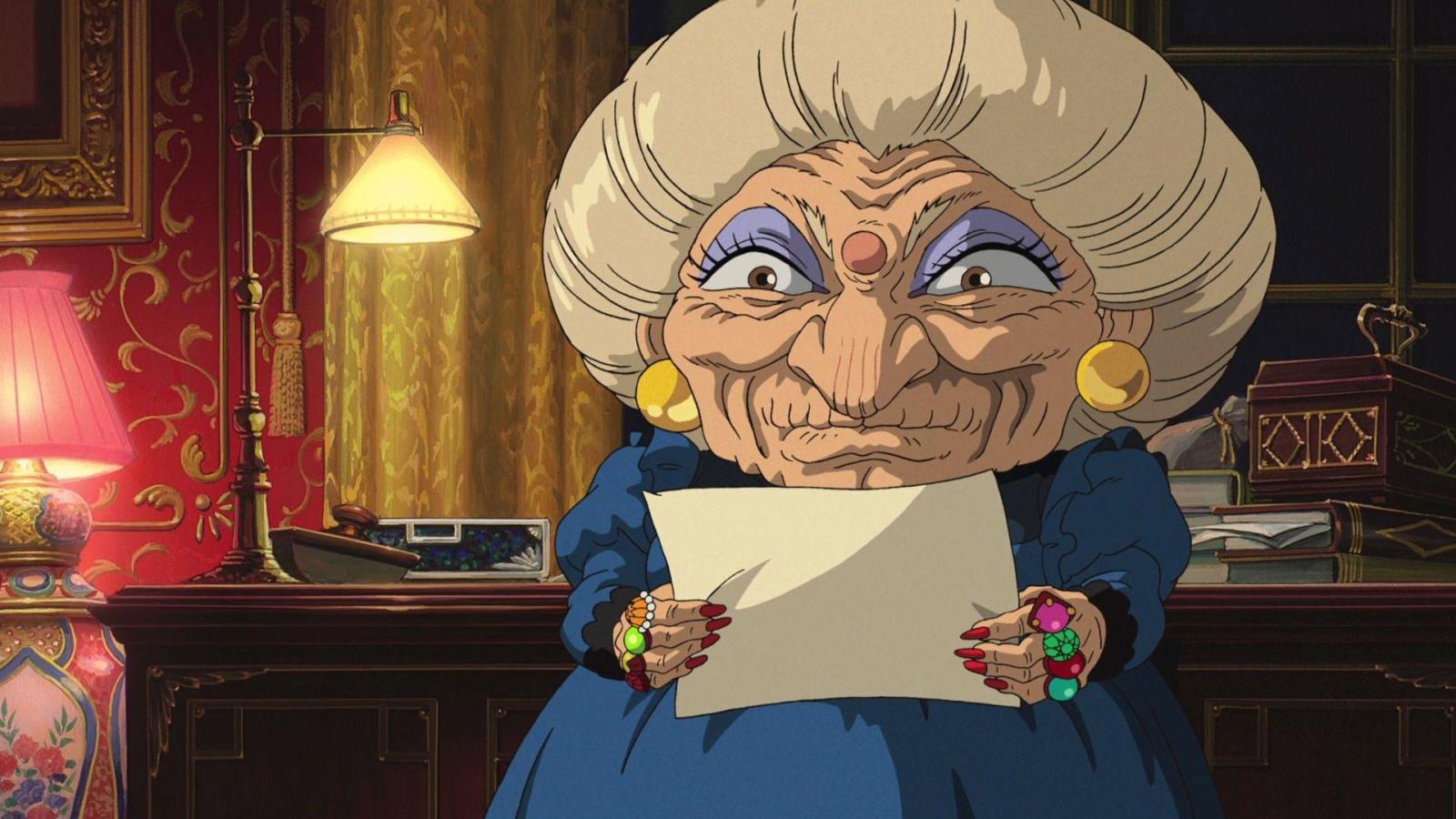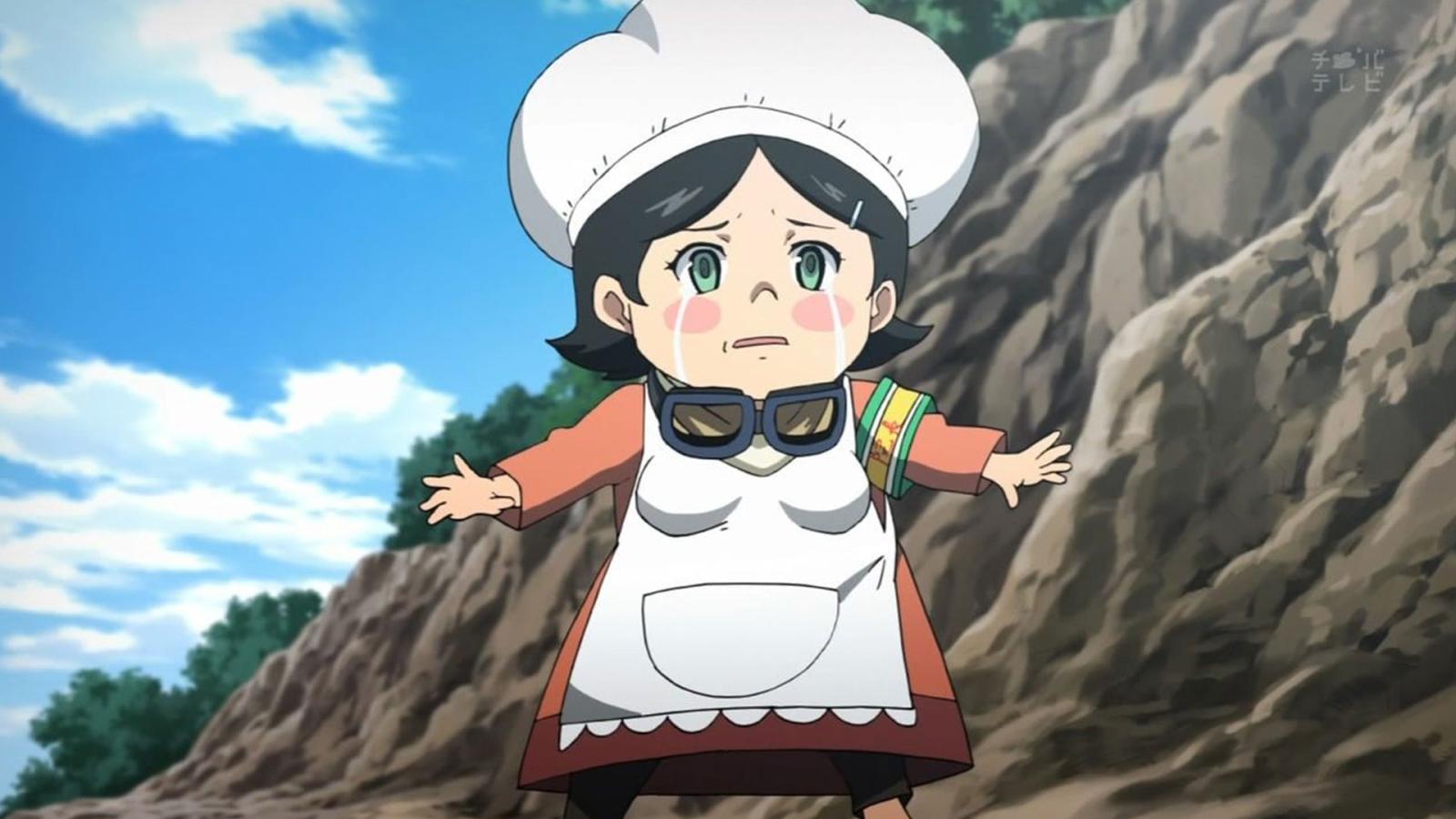Anime rarely shows chubby or plump characters, so it seems interesting to look at a few larger women in anime.
Anime is diverse; it is not a monolith. Anime styles vary from one series to another, but it seems that overweight characters are not very common. Here, we want to investigate this phenomenon and see if there are any trends there to analyze. Outside of anime, we know that fat characters, especially female characters, are often either a comedic relief or a grandmotherly nurturing figure. Also, bad characters, for example, antagonists, might be fat. Let us see if these motifs can be found in anime.
A very prominent anime studio is Studio Ghibli, and they do seem to include overweight characters in their works. For example, Howl’s Moving Castle has the Witch of the Waste, who might be a minor antagonist, but it is she who sets the events of the movie in motion. As such, she is fairly important. She is also clearly a bad character, and there is a scene of her struggling to get up some stairs, sweating profusely and generally not having a good time. To be fair, the stairs seem high enough to make anyone feel winded. We will also add that she does lose weight in the anime, but it does not seem to give her any results she would be happy with.
While talking about Howl’s Moving Castle, it is worth noting that the old version of Sophie is not very thin either. She is grandmotherly and nice; she is the protagonist, and unlike the Witch of the Waste, she struggles up the same stairs mostly because a magical creature is slowing her down. We are trying to avoid spoilers, so we will only add that Sophie’s old, comfy, overweight self manifests when she gives up on hope and strong emotion. Old age and fatness do not seem to be associated with positive things in this anime.
We can also mention Yubaba from Spirited Away, as well as her sister Zeniba. Both of them appear a bit fat, although with how out of proportion their heads are, it is difficult to say whether they are meant to be fat or just are constructed differently from the human characters. Yubaba is the villain of the story; Zeniba, on the other hand, is a kind, grandmotherly figure, who helps the protagonist. These two options fit into the mold. From these examples we can conclude that in the Ghibli universe, fat people definitely exist, and they can occasionally be evil, but they might have a good twin.

Continuing the tradition of fat antagonists, we have Rumi Hidaka from Perfect Blue. Perfect Blue’s animation has a different feel to it than Studio Ghibli’s does. In fact, one might notice that Perfect Blue does not really try to make people look beautiful, with large eyes and perfect figures. No, the cast of Perfect Blue is only beautiful when they work in an industry that requires them to be beautiful. An example of this is our main protagonist, Mima, who is a pop idol and later an actress. Rumi is Mima’s supposed friend, although this changes throughout the plot, and she is shown to be a little overweight. In fact, she had failed as an idol because of her appearance. She is not as grotesquely overweight as the Witch of the Waste, but then Perfect Blue has more connection to reality, so the woman’s more realistic proportions make sense. This is another fat antagonist (or friend-turned-antagonist) for us to consider.
Speaking of styles, Kamado Ueshita from Future Diary might be a very interesting case to review. She is fat, true, but she also has a strangely large head that none of the other characters have. She looks like she was taken from another anime with a different, more cartoonish style. She is also a kind person, who cannot be called grandmotherly only because she does not fit into the age bracket. She literally runs an orphanage, so we can call her just motherly. Both style-wise and character-wise, she does not fit into the anime she is in. She does fit into one of the archetypes of a fat woman, though, so she can be used as an example here.

Of course, there are also other side characters, such as Anna Hanyu from Buddy Daddies, who is difficult to even describe. She is nice, one can say, and she is not that large, but she is a little overweight. In other words, if you try hard enough, you can find fat women in anime. They are not very common, and they may fall into the general fat women archetype, some of them being evil and others being grandmotherly, or they might just not matter much. Either way, they are rare, and while our list is far from being exhaustive, the default female body in anime is thin.
Which is not necessarily a bad thing, though. Next time, we will take a look at chubby male characters and see which archetypes they fall into!

